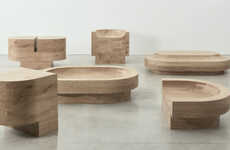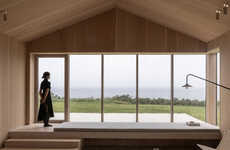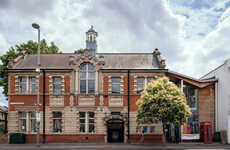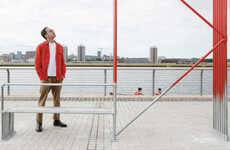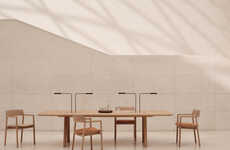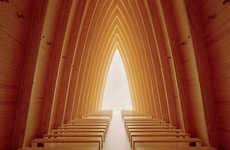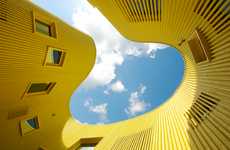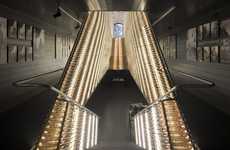
Worth Abbey by Thomas Heatherwick Features Carefully Crafted Details
Jana Pijak — March 11, 2012 — Art & Design
References: heatherwick & frameweb
Worth Abbey by Thomas Heatherwick is a 1970s Benedictine abbey that has been updated and brought into a new century. A contemporary redesign of a classic church concept, this stunning structure features modern architectural accents while paying homage to traditional wood-working crafts.
Constructed by British architect Francis Pollen in 1974, a new design concept by architect Thomas Heatherwick features a multitude of American walnut seats that are curved to mirror the circular architecture of the space.
Benches, choir stalls, tables, server seats and confessional rooms have all been replaced, making for a wood-clad interior that is traditional while keeping in touch with modern design ideals. Sleek and solid, Worth Abbey by Thomas Heatherwick features interior fittings that work together with the church's existing structure. Offsetting against one another, these design details put focus on clean lines and traditional textures.
Constructed by British architect Francis Pollen in 1974, a new design concept by architect Thomas Heatherwick features a multitude of American walnut seats that are curved to mirror the circular architecture of the space.
Benches, choir stalls, tables, server seats and confessional rooms have all been replaced, making for a wood-clad interior that is traditional while keeping in touch with modern design ideals. Sleek and solid, Worth Abbey by Thomas Heatherwick features interior fittings that work together with the church's existing structure. Offsetting against one another, these design details put focus on clean lines and traditional textures.
Trend Themes
1. Circular Seating Design - The use of circular seating design creates opportunities for architects and furniture designers to create unique and functional seating options for public spaces.
2. Combination of Traditional and Modern Design - The combination of traditional and modern design elements creates opportunities for architects and designers to create visually stunning yet functional structures and products.
3. Woodworking Craftsmanship in Modern Design - The use of woodworking craftsmanship in modern design creates opportunities for artisans and designers to create unique and visually appealing furniture and interior design elements.
Industry Implications
1. Architecture - Architecture firms can take inspiration from the circular seating design and the combination of traditional and modern design elements to create visually stunning structures and spaces for their clients.
2. Furniture - Furniture companies can explore the use of woodworking craftsmanship in modern design to create unique and visually appealing products for their customers.
3. Interior Design - Interior designers can leverage the circular seating design and the combination of traditional and modern design elements to create visually interesting and functional spaces for their clients.
3.8
Score
Popularity
Activity
Freshness


